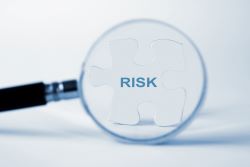Preventing Medical Emergencies in Healthcare Practices
Laura M. Cascella, MA, CPHRM
Medical emergencies in healthcare practices are a persistent concern. Although some medical emergencies are inevitable, others potentially can be avoided through careful patient evaluation and assessment.1 An article in the Journal of the American Dental Association explains that the prevention of medical emergencies relies on gathering adequate and appropriate information and assessing the patient’s level of care-related anxiety.2
Several steps in the patient care process are critical in the prevention effort, including the medical questionnaire, the provider–patient encounter, and the physical exam.
First, the medical questionnaire — completed by the patient or a parent/caregiver prior to seeing the healthcare provider — provides an initial glimpse of the patient’s current health status and medical history. The information gathered in the medical questionnaire is essential to understanding the patient’s clinical condition, and the provider should update it regularly and review it before each appointment.
Second, during the provider–patient encounter, the treating clinician can review the questionnaire and ask for clarification or additional information about any conditions the patient has reported. For example, if the patient is diabetic, the provider may inquire about management of blood sugar levels. If the patient has previously had a heart attack, the provider might ask about any ongoing symptoms, such as shortness of breath. The additional information gleaned during the provider–patient encounter may reveal potential red flags for a medical emergency.
Third, the physical exam gives the clinician an opportunity to evaluate the patient’s physical condition and determine whether the patient has any visible signs of illness or distress. For example, phobic patients might appear agitated or nervous, even if they have not verbalized any anxiety. Additionally, the physical exam allows the provider to obtain baseline vital signs, a valuable tool for monitoring the patient before, during, and after treatment and recognizing signs of distress.3
| Managing Phobic Patients |
|---|
| Patient phobias about medical and dental treatment might escalate into medical emergencies if they aren’t properly managed. To learn more about managing phobic patients, see MedPro’s article When Patient Phobias Turn Into Medical Emergencies. |
The information amassed from these three elements of the patient care process — the medical questionnaire, the provider–patient encounter, and the physical exam — can help the provider proactively assess the patient’s risk of a medical emergency.
If the level of risk is concerning, the provider might want to consider whether (a) seeking a consultation with a colleague, specialist, or other healthcare professional would be beneficial; (b) the patient’s treatment plan should be modified; or (c) the patient should be treated in a hospital.
To learn more about medical emergency preparedness, see Managing Medical Emergencies: A Three-Pronged Approach for Healthcare Practices.
Endnotes
1 Dentistry IQ. (2004). Medical emergencies in dentistry: Prevention and preparation. Retrieved from http://www.dentistryiq.com/articles/wdj/print/volume-2/issue-10/you-and-your-practice/medical-emergencies-in-dentistry-prevention-and-preparation.html
2 Malamed, S. F. (2010). Knowing your patients. Journal of the American Dental Association, 141(Suppl 1), 3S–7S.
3 Ibid.



